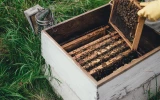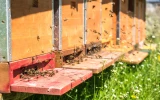The Right Type Of Beehive For You (with Pictures)
There are many types of beehives out there, and it can be difficult to decide which one is best for your needs. This guide will provide you with an overview of the different options available and help you decide which one is right for you.
When choosing a beehive, consider the amount of space you have, the level of maintenance you're willing to do, and the type of honey you want to produce. Langstroth hives are good for beginners, while Warre hives are less labor-intensive. With so many options, you're sure to find the right beehive for you.
Two of the most common beehive designs in use today are the Langstroth and Top Bar hives. Learn more about the pros and cons of each type so you can decide which one is right for you.
Summary
- The Langstroth beehive and Top Bar hive are two of the most popular beehive designs in the world today.
- Kenya Top Bar Beehive is the best pick for beginners.
- You need to consider factors such as space, maintenance, and the type of honey when choosing the best hive for you.
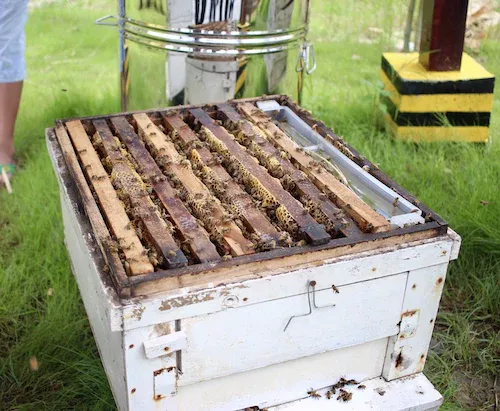
On this page:
Different Types of Beehives
Here's a comprehensive list of different types of beehives. This list will provide an overview of the various types of beehives that exist, from the traditional Langstroth beehive to the modern Top Bar hive. Whether you are a novice beekeeper or a seasoned beekeeping enthusiast, this list will help you find the right type of beehive for your needs.
1. Langstroth beehive
The Langstroth beehive is one of the most popular beehive designs in the world today. It is a modular design that allows for easy harvesting of honey and other products from the hive. The design also makes it easier to inspect the inside of the hive and treat for diseases and pests.
Pros of Langstroth beehive
- Modular design, meaning the boxes can be added, removed, and replaced as needed.
- The hive has a movable frame design, which makes it easier to inspect the inside of the hive.
- The design is stackable, making it easier to store and transport.
- The hive provides a more natural environment for the bees.
- The design allows for easier harvesting of honey and other hive products.
Cons of Langstroth beehive
- The hive is more expensive than other designs.
- It is more difficult to construct than other designs.
- The design can be difficult to maintain.
- The design is more susceptible to pests and diseases.
2. Top Bar beehive
A Top Bar beehive is a type of beehive designed to give beekeepers a more natural, horizontal way to house their bees.
Pros of top bar beehive
- It is designed to mimic a natural bee habitat.
- Beekeepers can easily monitor their bees’ activity without having to open the hive.
- It is generally cheaper than other beehive designs.
Cons of top bar beehive
- It has less space than other beehive designs.
- Must be checked more frequently to ensure that the bees are healthy and thriving.
- Not as much honey can be harvested.
3. Warré beehive
The Warré Beehive is an adjustable, top-bar beekeeping system first developed by a French beekeeper, Abbé Émile Warré, in the early 1900s.
Pros of Warré beehive
- Easy to assemble, with minimal tools required
- Can be used to raise multiple colonies of bees
- Bees can easily move up and down in the hive, allowing them to regulate their temperature
- Simple to inspect, with no lifting of heavy frames required
Cons of Warré beehive
- Difficult to harvest honey from, as the combs must be cut from the bars
- More difficult to monitor for pests, diseases, and other issues
- More frequent inspections are required, as bees tend to build combs more quickly
4. Dadant beehive
The Dadant beehive is a popular choice among beekeepers. It is a larger hive, providing more space for the bees to live and thrive.
Pros of Dadant beehive
- The Dadant beehive is an excellent choice for novice beekeepers, as it is easy to use and understand.
- It has a deep brood box, which allows for more bees and more honey production.
- It has an improved ventilation system to help prevent swarming.
Cons of Dadant beehive
- The Dadant beehive is more expensive than other beehive types.
- It is heavier and bulkier than other beehives, making it more difficult to transport and manage.
- It has a smaller entrance, which can make it more difficult for bees to enter and exit.
5. Kenya top bar beehive
The Kenya Top Bar Beehive is a simple and cost-effective beehive that has been used in Kenya since the 1970s. This type of beehive is made from a log or tree trunk and consists of a series of removable bars on which the bees can build comb. It is an attractive and easy-to-use option for those just getting started in beekeeping.
Pros of Kenya top bar beehive
- Easy to construct and maintain
- Can be made from locally available materials
- Low cost
Cons of Kenya top bar beehive
- Not suitable for large-scale beekeeping
- Difficult to control the size of the colony
- Limited space for honey storage
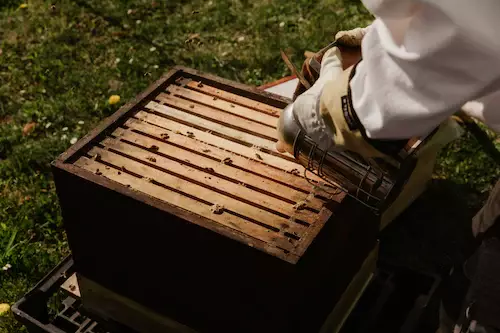
6. Layens beehive
The Layens beehive is a horizontal top bar hive that is designed to provide the bees with a natural environment while being easy to manage.
Pros of Layens beehive
- Easy to use and maintain
- Allows for more natural bee behavior
- Can be used to produce honey
Cons of Layens beehive
- More complex than other beehives
- Difficult to harvest honey
- Requires more space
7. Flow Hive
The Flow Beehive is an innovative design to make beekeeping easier and more efficient. It was created by beekeepers and engineers in Australia and is now being used around the world.
Pros of flow Hive
- Easier to inspect and maintain
- No need to remove frames to harvest honey
- Quicker and more efficient harvesting of honey
Cons of flow Hive
- More expensive to set up
- Not compatible with traditional beekeeping equipment
- Limited availability in certain areas
8. National Beehive
The National Beehive is an organization dedicated to the conservation and promotion of bees and beekeeping. It is a valuable source of knowledge and resources for beekeepers and bee enthusiasts alike. With the National Beehive, beekeepers can access resources such as beekeeping courses, guides, videos, and more.
Pros of national Beehive
- Access to a variety of beekeeping resources
- Connects beekeepers
- Helps spread the importance of bee conservation
Cons of national Beehive
- Can be difficult to find the exact resource needed
- Not as comprehensive as other beekeeping organizations
- Limited access to certain memberships
9. Smith beehive
The Smith Beehive is a revolutionary beehive design that has revolutionized the beekeeping industry. This beehive has been designed to make beekeeping easier and more efficient, as well as provide a more comfortable environment for the bees.
Pros of Smith beehive
- Improved bee health and productivity
- Easy to maintain and manipulate
- Provides a safer, more comfortable environment for the bees
Cons of Smith beehive
- High upfront cost
- Difficult to assemble
- Not suitable for colder climates
10. Humble beehive
A humble beehive is a valuable tool for farmers and beekeepers alike. It provides a haven for bees to live and to produce honey, wax, propolis, and other bee products.
Pros of humble beehive
- Provides a safe home for bees
- Produces a variety of bee products
- Can be used to create a sustainable ecosystem
Cons of humble beehive
- Requires regular maintenance
- Can attract pests
- Can be expensive to buy or build
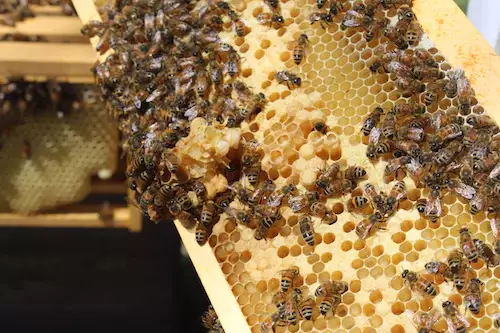
Choosing The Best Hive For You
When choosing a beehive, it’s important to consider the amount of space you have available, the level of maintenance you’re willing to do, and the type of honey you want to produce.
- The amount of space you have available for a beehive will determine the type and size of hive you’ll need.
- The level of maintenance you’re willing to do is also an important factor in choosing a beehive. Some hives require more maintenance than others.
- Finally, the type of honey you want to produce should be considered when selecting a beehive. Different types of honey require different types of hives.

